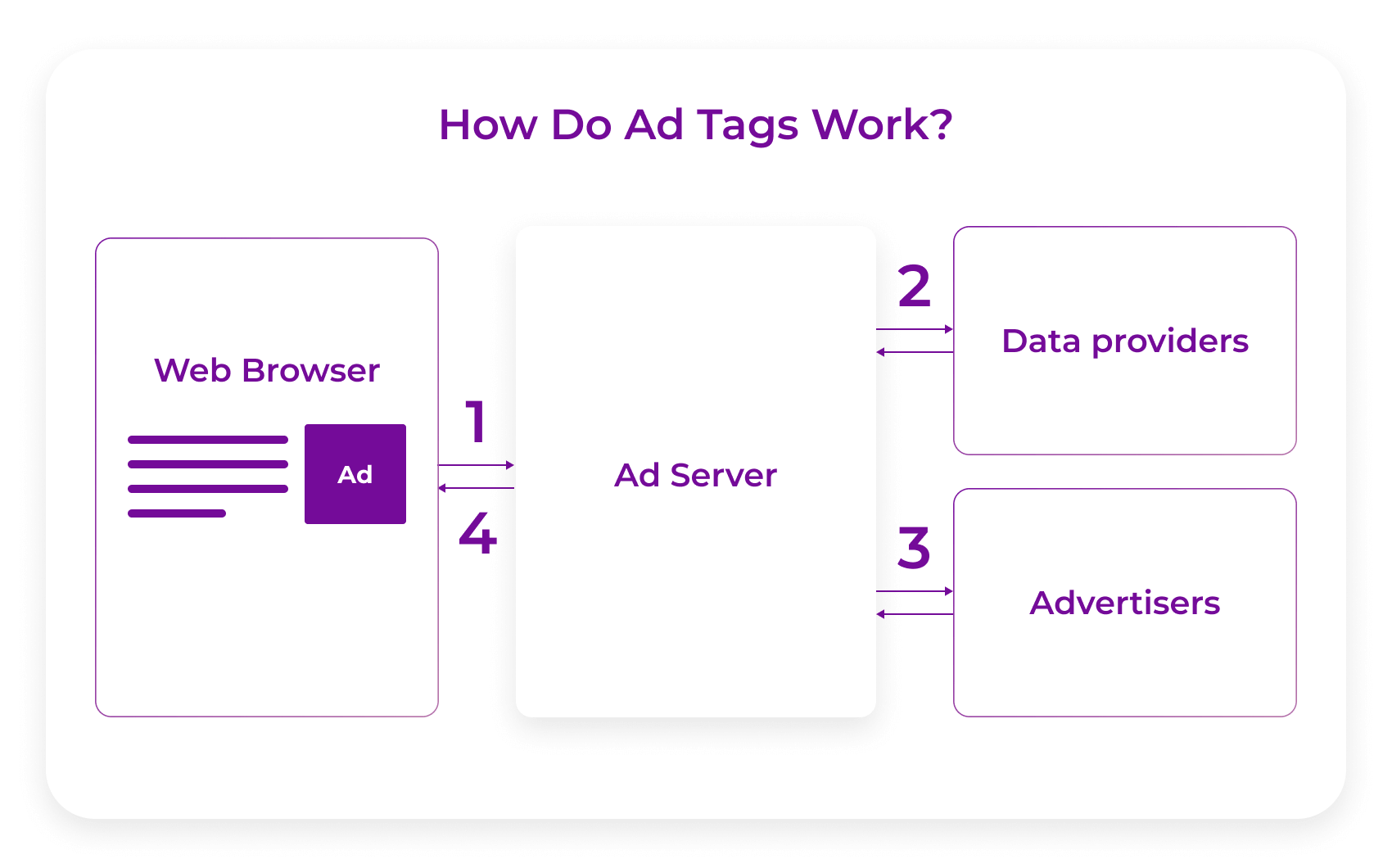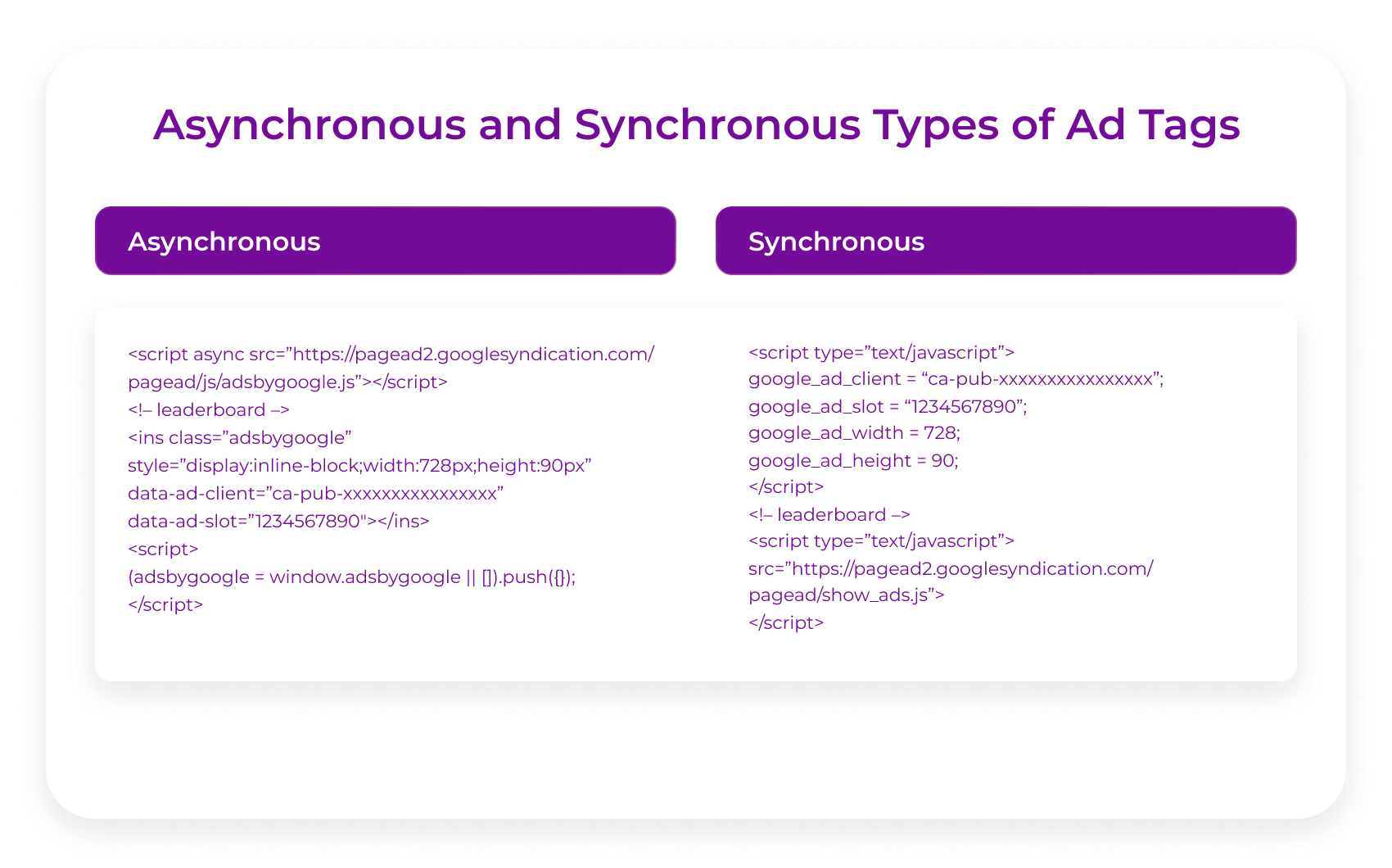Ad tags are often mentioned in the context of the digital advertising industry. That is because they are, in fact, the core elements of the media-buying process and are useful for both publishers, advertisers, and ad networks. But how exactly can a small piece of code play such an important role? Let’s find out!
What is ad tag
As we mentioned, an ad tag is an html or javascript code added to the website to enable loading, display, and tracking of ad creatives. Ad tags are used for various purposes, such as to signify the space for ad placement, send ad call for third-party ad server, and enable tracking and reporting features. They are sometimes referred to as creative tags and can include a wide range of details about the ad units, such as their size, format, basic page info, information about users, and many more.
Why we need creative tagging
Properly implemented ad tags make the programmatic ecosystem simpler and more convenient. They perform a range of essential functions for every member of the media trading process.
For publishers: The primary function of original tags is to generate bid requests that inform advertisers that inventory is available for sale. By creating ad tags and inserting them into the source code, publishers build a foundation for their website monetization.
For advertisers: Ad tags are used to request and display their ad creatives within the inventory slot on the web page. They are also applied to report how the impression gets served on the website; this enables advertisers to build a better programmatic ads strategy.
For ad servers: Ad servers use ad tags generated by the publishers to move ad calls and enable the trading process. Next, requests for bids are created so that the auction could start. Thanks to ad tags, the inventory is then passed to the next steps of the exchange chain.
For other services: The usage of third-party ad tags makes it possible to perform some additional features. For example, data-management platforms use creative tagging to gather user data, which can then be utilized for analyzing the target audience persona.
How ad tags work
Now that we have a definition of what is an ad tag and why we need it, it is time to take a more in-depth insight into the main principles of how ad tags work. We can examine the process by dividing it into these five simple steps:
Step 1. First things first, the publisher has to insert a JavaScript or HTML code on the web page, which will specify what kind of ad placements are available for sale. It is also up to publishers to define how exactly they want their tags to work and what functions they should perform.
Step 2. When the visitor enters the website, an ad tag is activated, and a call is sent to the ad server while the page is loading. It receives the data about available ad units and sends requests to the third-parties for additional information, if applicable.
Step 3. A third-party data provider returns this request along with gathered information about the user to the ad server. It can then be used to enable targeting and reporting.
Step 4. Next, advertisers receive requests that offer to participate in real-time bidding auctions.
Step 5. Once the advertiser sends the creative to an ad server, the ad tag is returned with the URL of that original, and the ad is served.

Types of ad tags
There are two types of ad tags which publishers can choose from:
Synchronous ad tags are the tags that load with the content of the website. They are usually loaded sequentially, which is why page latency may occur in some cases.
Asynchronous ad tags load independently on the browser so that the ad serving doesn’t affect page load time. Because of this, most publishers prefer an asynchronous type of tags, plus, they are often available on the platforms by default.
Here is what these tags usually look like:

A reading of an ad tag example:
Here is a simple ad tag example from DoubleClick - let’s take a look at its elements and explore their meaning:
http://ad.doubleclick.net/ADJ/publisher/zone;topic=abc;sbtpc=def;kw=xyz;tile=1;slot=728x90.1;sz=728x90;ord=7268140825331981?
http://ad.doubleclick.net/ - this first element specifies the ad server and its host address. In this example its DoubleClick which has by now merged into Google Ad Manager;
/ADJ - this part defines what kind of response is expected - images served via JavaScript for this case;
/publisher - this code distinguishes publisher properties in publisher networks;
/zone;topic=abc; sbtpc=def;- this part specifies zone, a topic and subtopic within the website; for example - News, Hobbies, or Sports. Including this information makes targeting more precise and relevant;
kw=xyz - this part includes keywords for the creatives - there can be one or multiple; tile=1 - a unique value is given to each ad call that prevents the same ad from appearing at multiple placements at the same time;
slot=728x90.1;sz=728x90; - a couple of specifications for the ad slot - its size and ordinal number;
ord=7268140825331981? - this part prevents the browser from loading the same ad from the cache when the user returns to the same page;
Conclusions
Ad tags play an important role in the digital advertising industry, as they are essential for almost every step of the media trading process. The usage of creative tagging helps publishers to start effective website monetization that exponentially increases their revenues. At the same time, for the advertisers, creative tags provide a perfect opportunity to launch precisely targeted display advertising campaigns.




